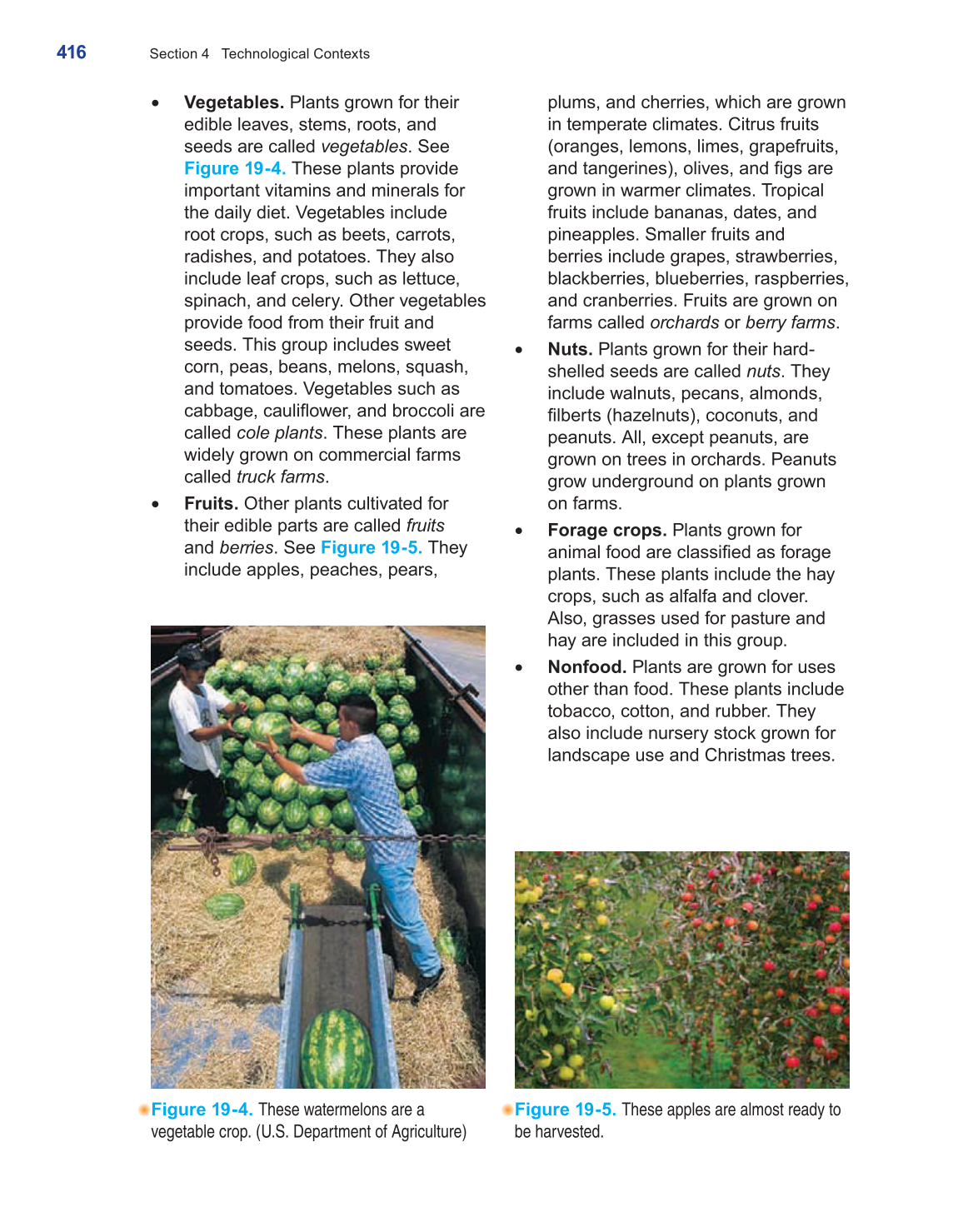416
Section 4 Technological Contexts
• Vegetables. Plants grown for their
edible leaves, stems, roots, and
seeds are called vegetables. See
Figure 19-4. These plants provide
important vitamins and minerals for
the daily diet. Vegetables include
root crops, such as beets, carrots,
radishes, and potatoes. They also
include leaf crops, such as lettuce,
spinach, and celery. Other vegetables
provide food from their fruit and
seeds. This group includes sweet
corn, peas, beans, melons, squash,
and tomatoes. Vegetables such as
cabbage, cauliflower, and broccoli are
called cole plants. These plants are
widely grown on commercial farms
called truck farms.
• Fruits. Other plants cultivated for
their edible parts are called fruits
and berries. See Figure 19-5. They
include apples, peaches, pears,
plums, and cherries, which are grown
in temperate climates. Citrus fruits
(oranges, lemons, limes, grapefruits,
and tangerines), olives, and figs are
grown in warmer climates. Tropical
fruits include bananas, dates, and
pineapples. Smaller fruits and
berries include grapes, strawberries,
blackberries, blueberries, raspberries,
and cranberries. Fruits are grown on
farms called orchards or berry farms.
• Nuts. Plants grown for their hard-
shelled seeds are called nuts. They
include walnuts, pecans, almonds,
filberts (hazelnuts), coconuts, and
peanuts. All, except peanuts, are
grown on trees in orchards. Peanuts
grow underground on plants grown
on farms.
• Forage crops. Plants grown for
animal food are classified as forage
plants. These plants include the hay
crops, such as alfalfa and clover.
Also, grasses used for pasture and
hay are included in this group.
• Nonfood. Plants are grown for uses
other than food. These plants include
tobacco, cotton, and rubber. They
also include nursery stock grown for
landscape use and Christmas trees.
Figure 19-4. These watermelons are a
vegetable crop. (U.S. Department of Agriculture)
Figure 19-5. These apples are almost ready to
be harvested.
